Abstract
The relationship between the destruction of Leishmania, the recruitment of monocytes and macrophage activity in the lesions of cutaneous leishmaniasis (CL) was studied in 53 biopsies representing the phases of evolution of the infection. Lysozyme, amastigotes and their degradation products were located by their specific antibodies. A rising level of monocyte influx was found to correlate with the degradation and solubilization of antigen, a falling level with final clearance. Differences in the results supported the previous concept of macrophage activation and macrophage lysis as alternative mechanisms for the elimination of Leishmania. Macrophage activation appeared to coincide with re-phagocytosis of externalized antigenic products of different type and origin. Macrophage lysis was a fully effective mechanism only when the antigen was contained within a focalized granuloma before mass lysis. Failing this, degradation and clearance of antigen were incomplete, and residues were sequestered on the periphery of the lesion where they bound to collagen and epidermis with consequential tissue damage. Antigen was demonstrated on the surface of lightly parasitized macrophages but not heavily infected ones. Other cells bound antigen without ingesting it, a process which might allow antigen presentation though it would also favour survival of parasites within the cell.
Full text
PDF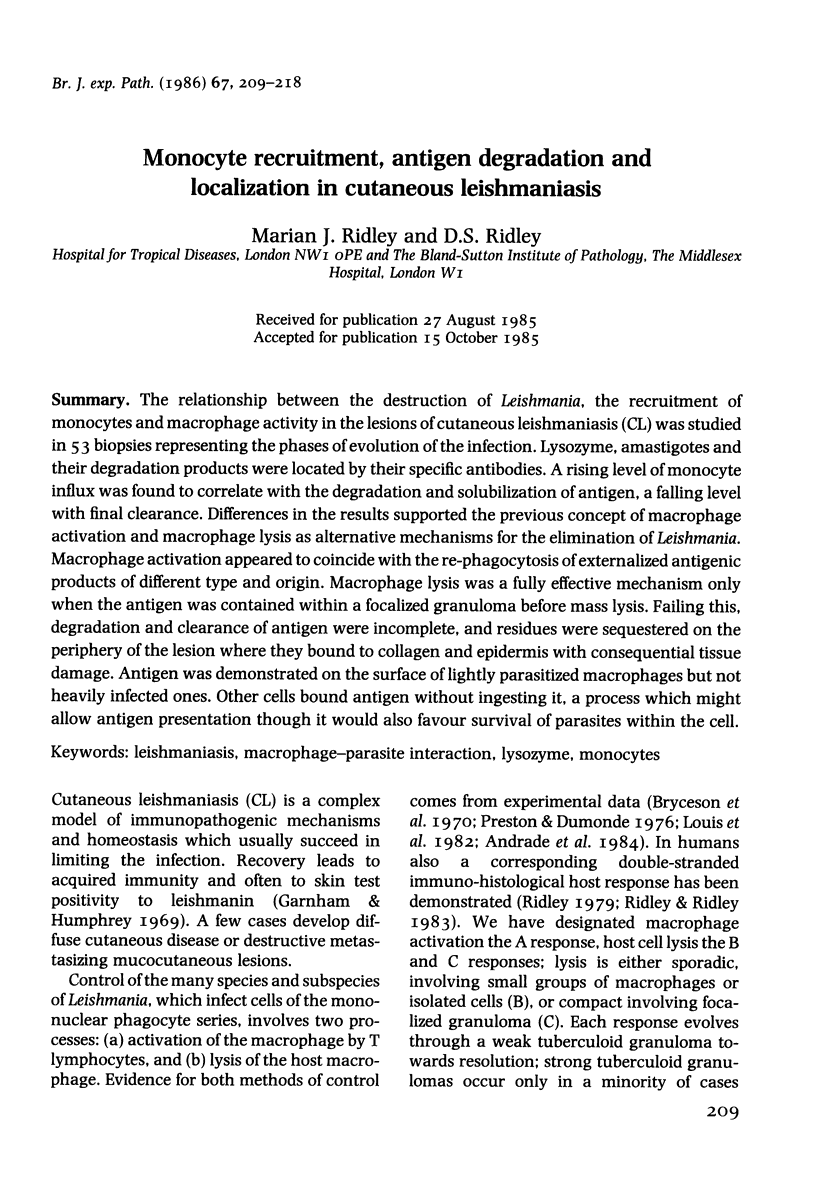
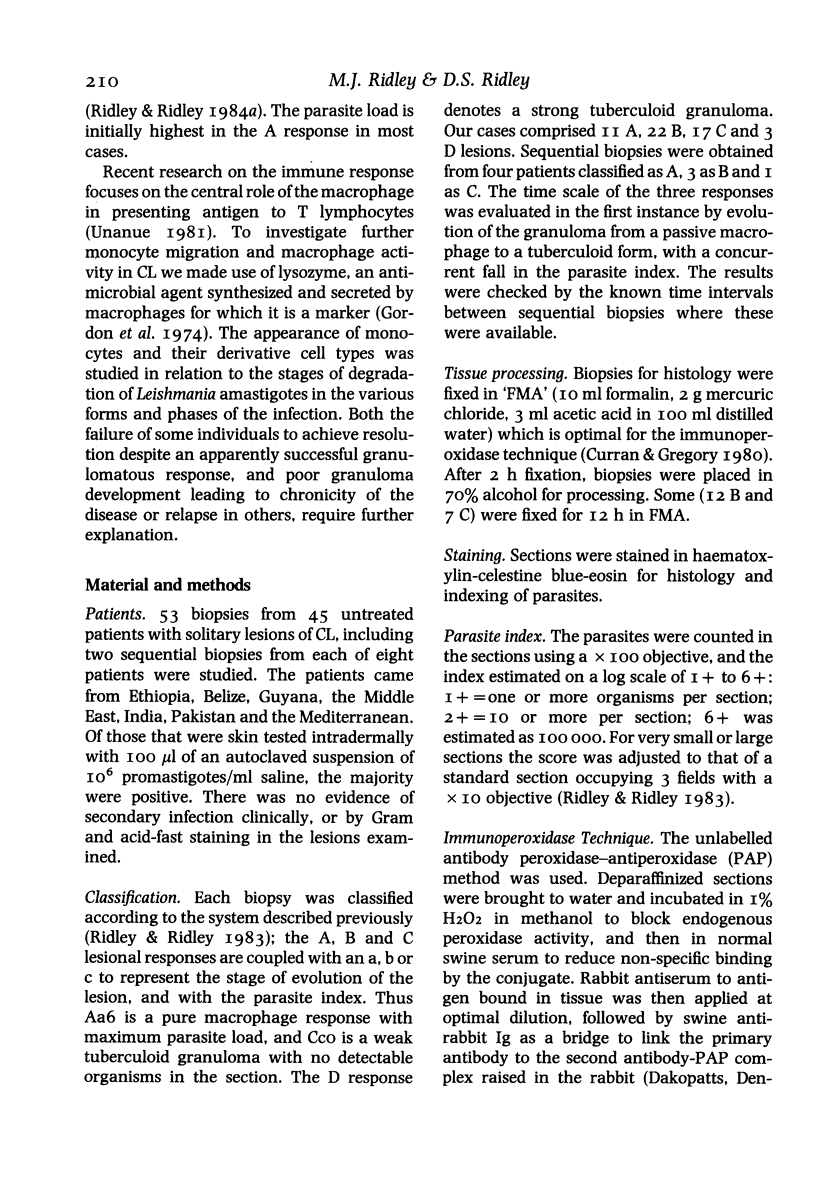
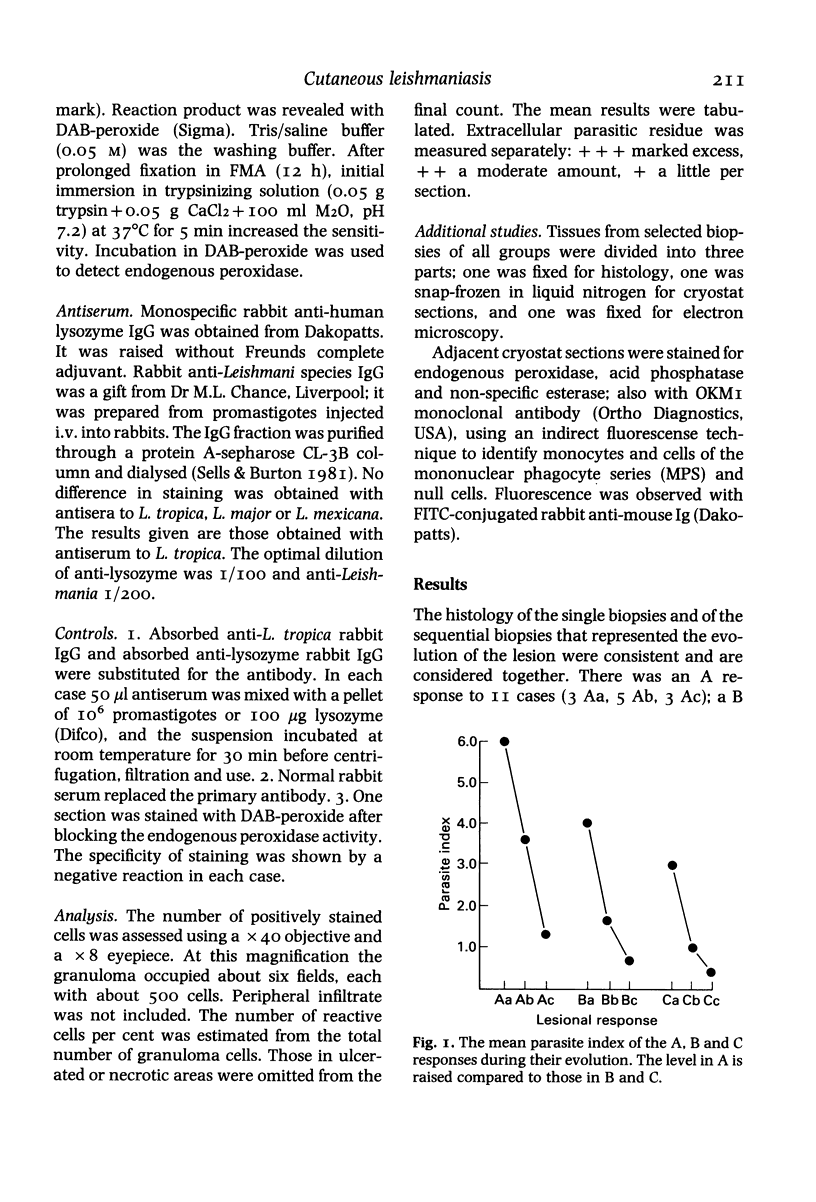
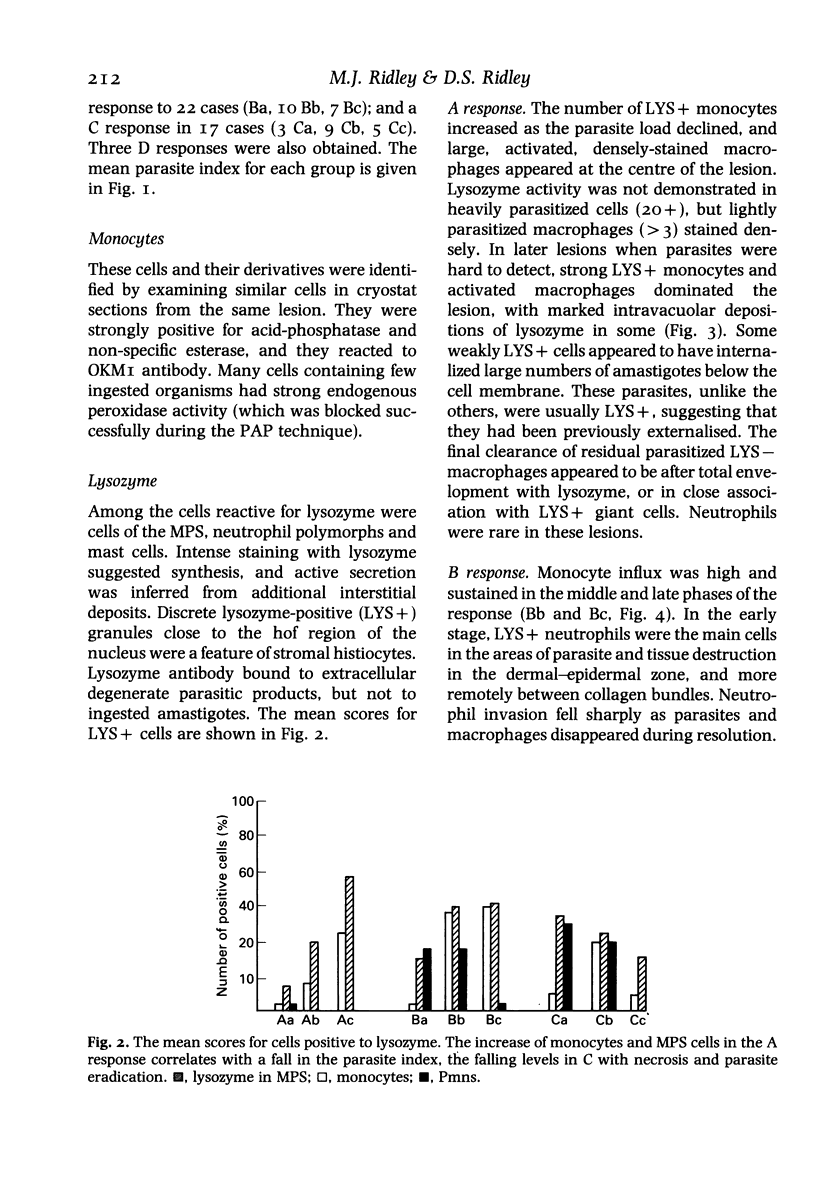
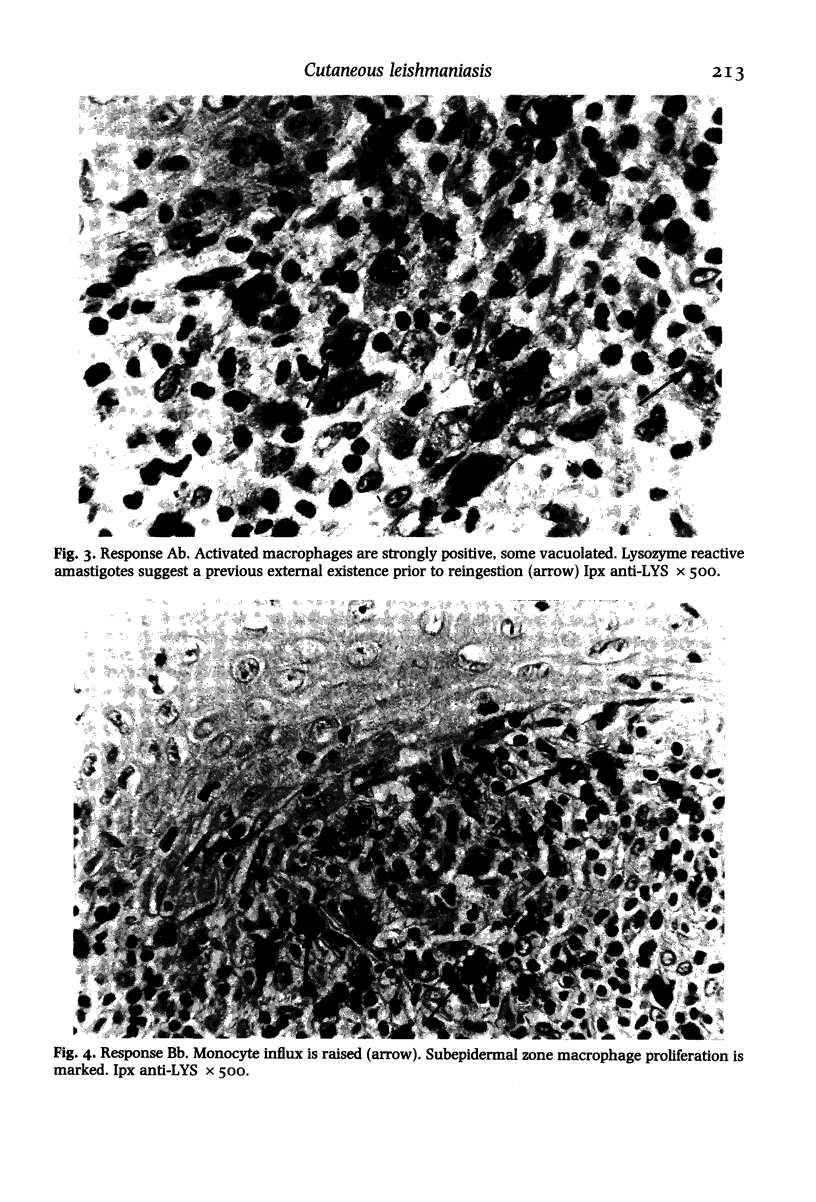
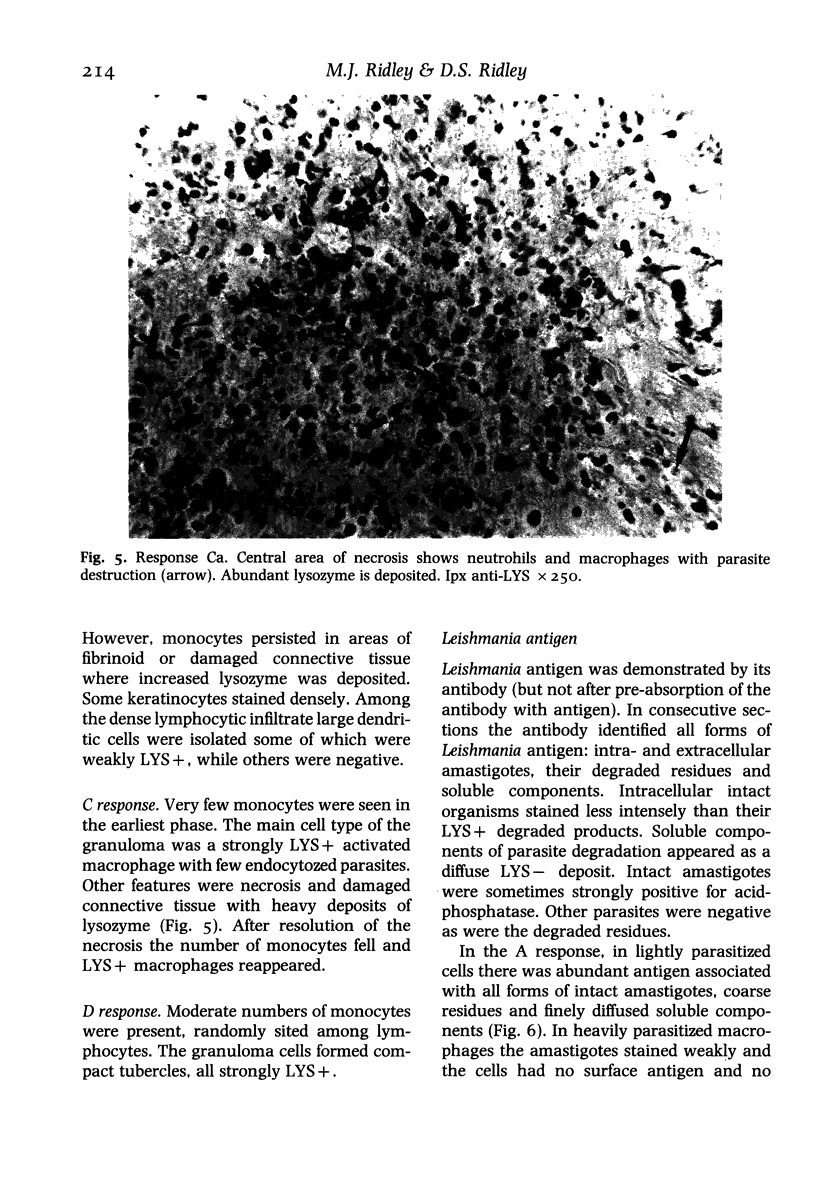
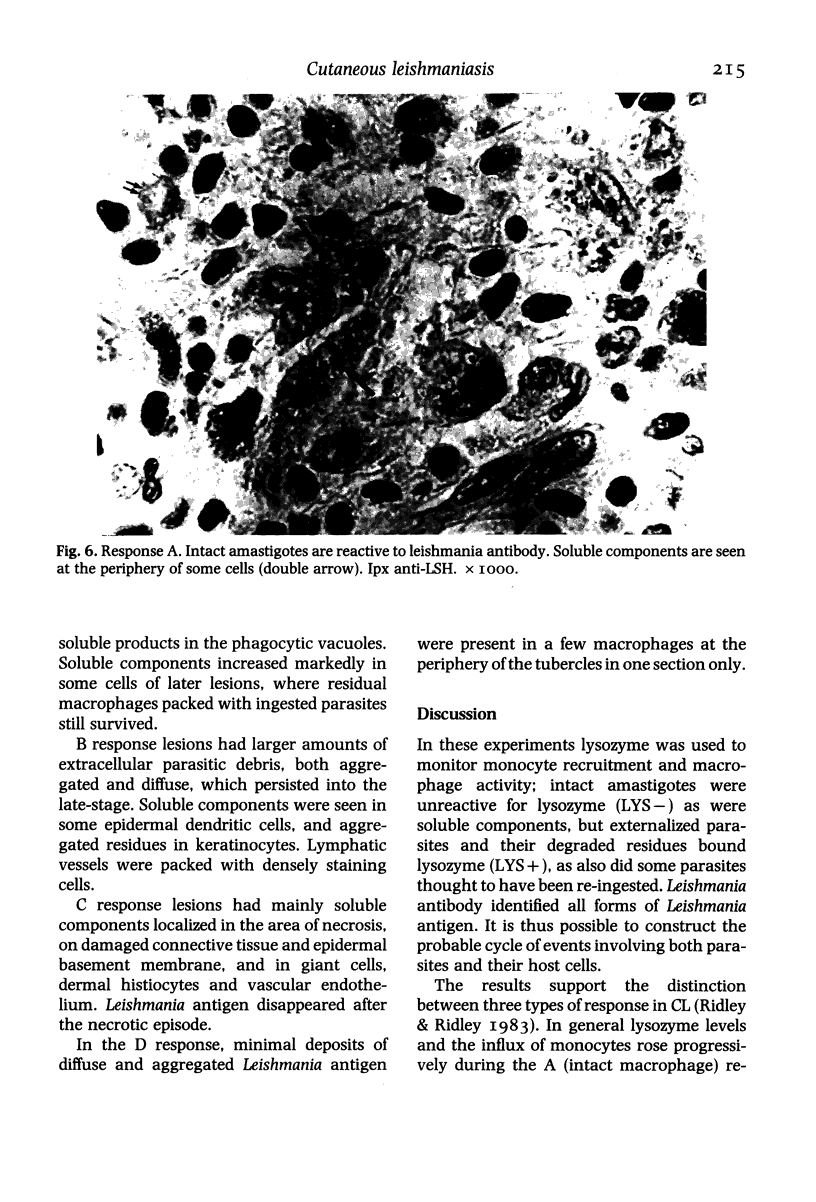

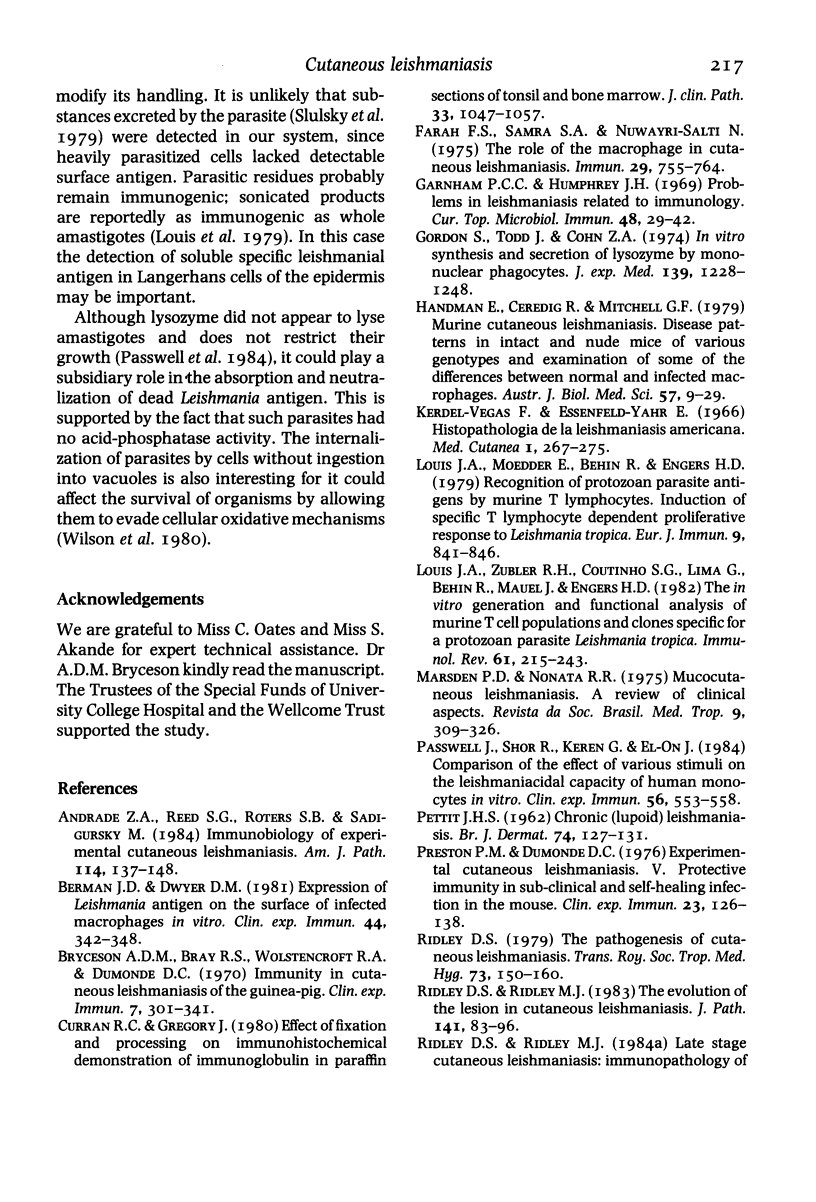
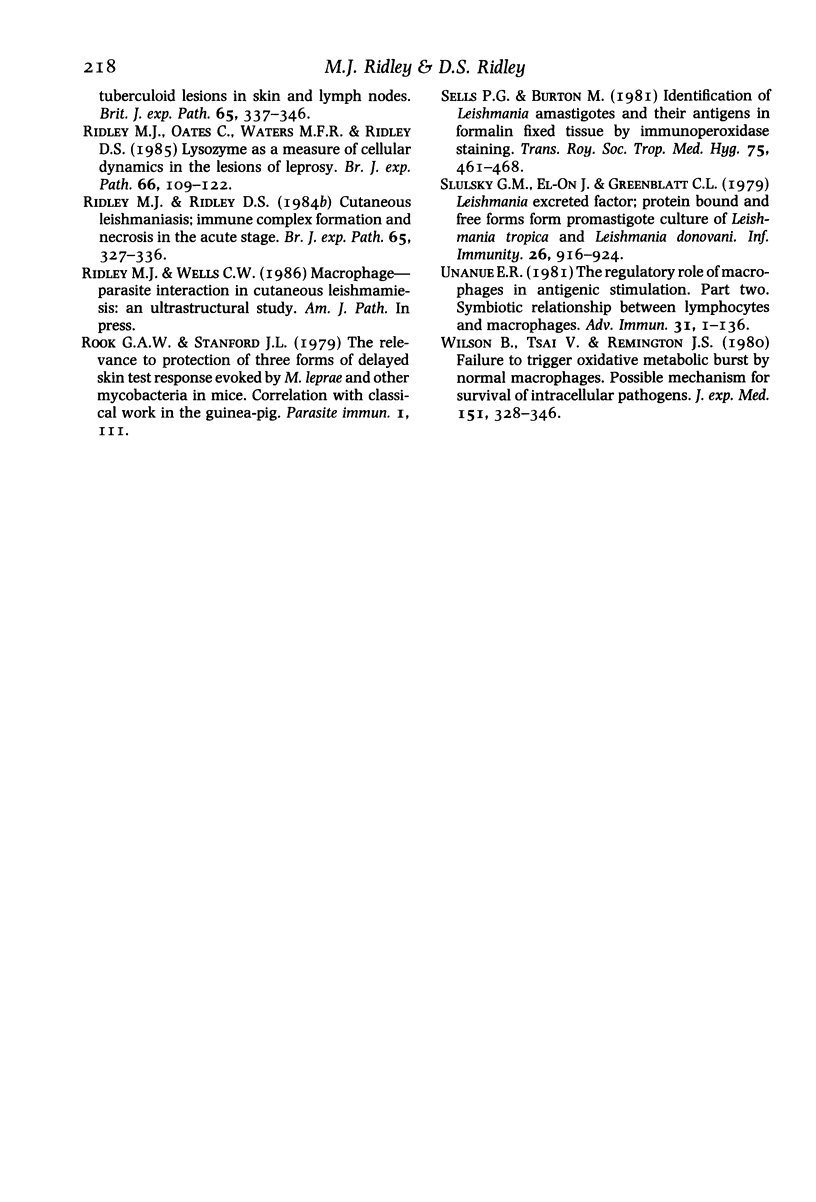
Images in this article
Selected References
These references are in PubMed. This may not be the complete list of references from this article.
- Andrade Z. A., Reed S. G., Roters S. B., Sadigursky M. Immunopathology of experimental cutaneous leishmaniasis. Am J Pathol. 1984 Jan;114(1):137–148. [PMC free article] [PubMed] [Google Scholar]
- Berman J. D., Dwyer D. M. Expression of Leishmania antigen on the surface membrane of infected human macrophages in vitro. Clin Exp Immunol. 1981 May;44(2):342–348. [PMC free article] [PubMed] [Google Scholar]
- Bryceson A. D., Bray R. S., Wolstencroft R. A., Dumonde D. C. Immunity in cutaneous leishmaniasis of the guinea-pig. Clin Exp Immunol. 1970 Sep;7(3):301–341. [PMC free article] [PubMed] [Google Scholar]
- Garnham P. C., Humphrey J. H. Problems in leishmaniasis related to immunology. Curr Top Microbiol Immunol. 1969;48:29–42. doi: 10.1007/978-3-642-46163-7_2. [DOI] [PubMed] [Google Scholar]
- Gordon S., Todd J., Cohn Z. A. In vitro synthesis and secretion of lysozyme by mononuclear phagocytes. J Exp Med. 1974 May 1;139(5):1228–1248. doi: 10.1084/jem.139.5.1228. [DOI] [PMC free article] [PubMed] [Google Scholar]
- Handman E., Ceredig R., Mitchell G. F. Murine cutaneous leishmaniasis: disease patterns in intact and nude mice of various genotypes and examination of some differences between normal and infected macrophages. Aust J Exp Biol Med Sci. 1979 Feb;57(1):9–29. doi: 10.1038/icb.1979.2. [DOI] [PubMed] [Google Scholar]
- Passwell J., Shor R., Keren G., Messer G., El-On J. Comparison of the effect of various stimuli on the leishmaniacidal capacity of human monocytes in vitro. Clin Exp Immunol. 1984 Jun;56(3):553–558. [PMC free article] [PubMed] [Google Scholar]
- Ridley D. S., Ridley M. J. Late-stage cutaneous leishmaniasis: immunopathology of tuberculoid lesions in skin and lymph nodes. Br J Exp Pathol. 1984 Jun;65(3):337–346. [PMC free article] [PubMed] [Google Scholar]
- Ridley D. S., Ridley M. J. The evolution of the lesion in cutaneous leishmaniasis. J Pathol. 1983 Sep;141(1):83–96. doi: 10.1002/path.1711410109. [DOI] [PubMed] [Google Scholar]
- Ridley M. J., Oates C., Waters M. F., Ridley D. S. Lysozyme as a measure of cellular dynamics in the lesions of leprosy. Br J Exp Pathol. 1985 Feb;66(1):109–122. [PMC free article] [PubMed] [Google Scholar]
- Ridley M. J., Ridley D. S. Cutaneous leishmaniasis: immune complex formation and necrosis in the acute phase. Br J Exp Pathol. 1984 Jun;65(3):327–336. [PMC free article] [PubMed] [Google Scholar]
- Sells P. G., Burton M. Identification of Leishmania amastigotes and their antigens in formalin fixed tissue by immunoperoxidase staining. Trans R Soc Trop Med Hyg. 1981;75(3):461–468. doi: 10.1016/0035-9203(81)90121-8. [DOI] [PubMed] [Google Scholar]
- Wilson C. B., Tsai V., Remington J. S. Failure to trigger the oxidative metabolic burst by normal macrophages: possible mechanism for survival of intracellular pathogens. J Exp Med. 1980 Feb 1;151(2):328–346. doi: 10.1084/jem.151.2.328. [DOI] [PMC free article] [PubMed] [Google Scholar]






